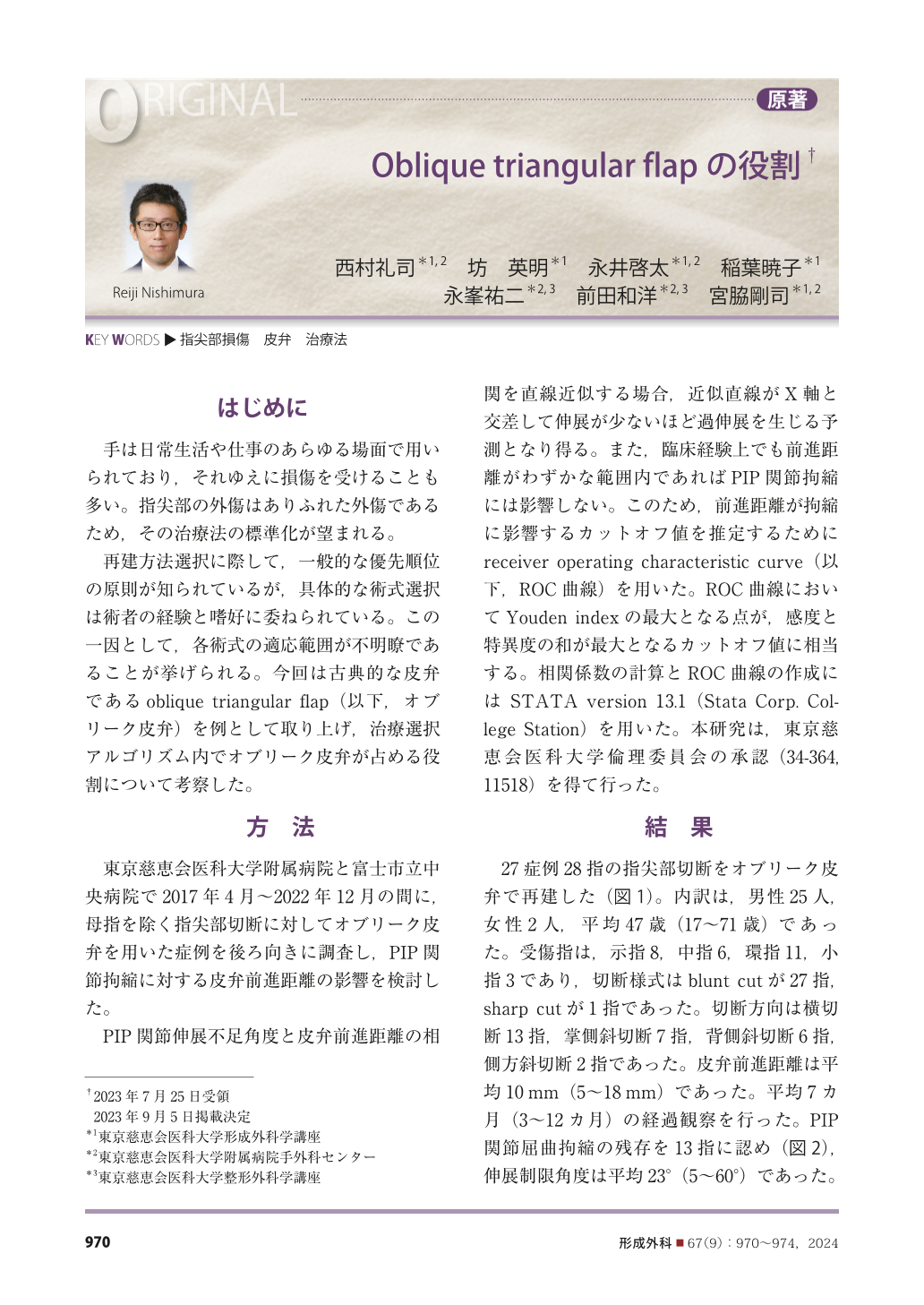Japanese
English
- 有料閲覧
- Abstract 文献概要
- 1ページ目 Look Inside
- 参考文献 Reference
はじめに
手は日常生活や仕事のあらゆる場面で用いられており,それゆえに損傷を受けることも多い。指尖部の外傷はありふれた外傷であるため,その治療法の標準化が望まれる。
再建方法選択に際して,一般的な優先順位の原則が知られているが,具体的な術式選択は術者の経験と嗜好に委ねられている。この一因として,各術式の適応範囲が不明瞭であることが挙げられる。今回は古典的な皮弁であるoblique triangular flap(以下,オブリーク皮弁)を例として取り上げ,治療選択アルゴリズム内でオブリーク皮弁が占める役割について考察した。
Fingertip injuries are common, and the treatment of common injuries needs to be standardized. An ideal treatment algorithm should be simple, easy to learn with integrated treatments, and provide stable outcomes. An oblique triangular flap is likely to be useful in standardized treatment algorithms because of its ease and stability. Although an oblique flap can cover relatively large defects by flexing the handʼs proximal interphalangeal (PIP) joint, our present findings indicate the need for limited indications to prevent PIP joint contracture. We observed that the distance of the advancement of the oblique flap increases the risk of PIP flexion contracture, and the limit of distance that can be advanced without causing contracture was presumed to be around 10 mm. We believe that further clarification of the role and application range of each common treatment method, such as the oblique flap, will lead to a standard treatment algorithm for fingertip injuries in the future.

Copyright© 2024 KOKUSEIDO CO., LTD. All Rights Reserved.


